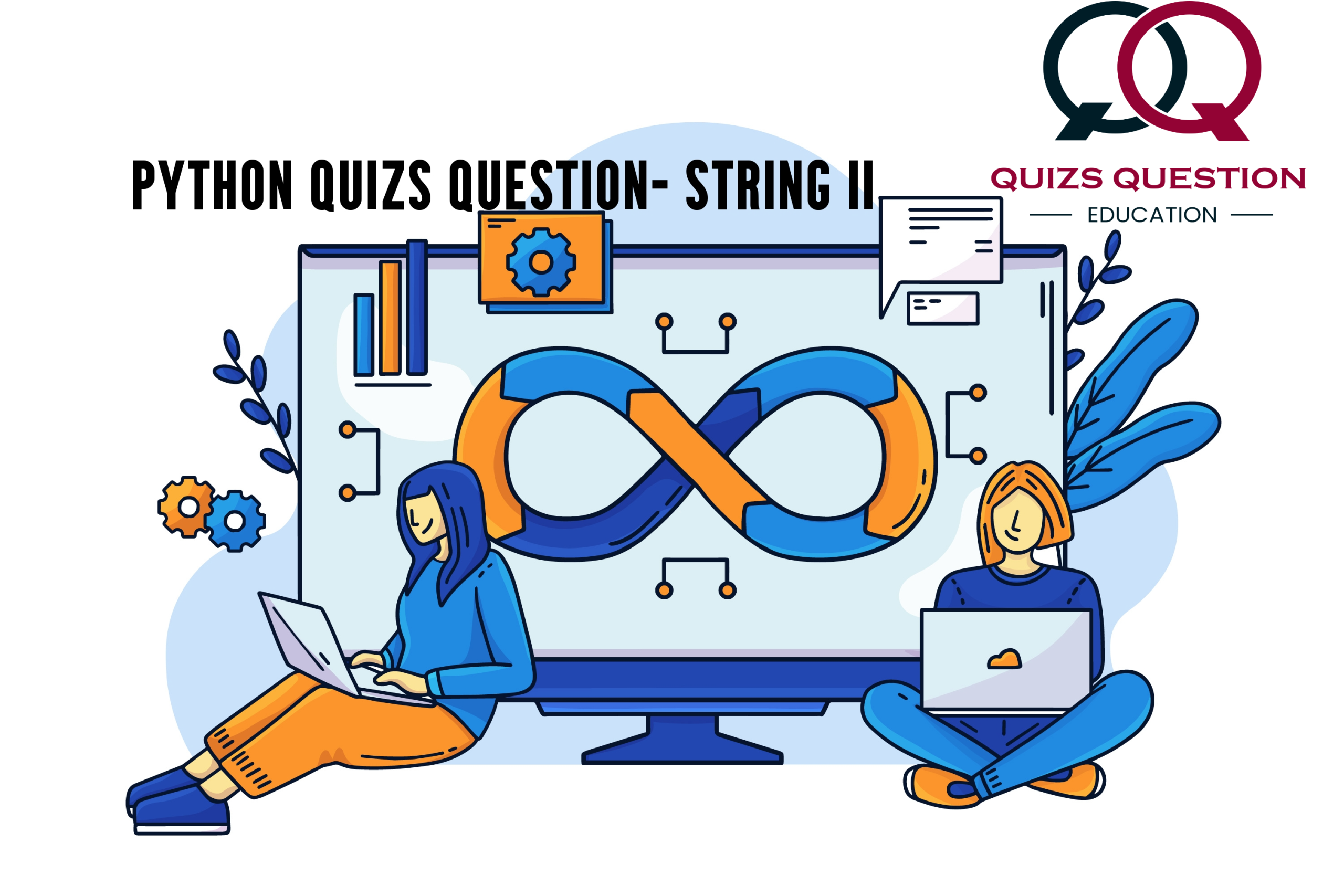Q 1. What will be the output of the following Python code snippet?
print(‘Ab!2’.swapcase())
A. AB!@
B. ab12
C. aB1@
D. aB!2
Show Answer
Answer:-D. aB!2Explanation
Lowercase letters are converted to uppercase and vice-versa.Q 2. What will be the output of the following Python code snippet?
print(‘ab cd ef’.title())
A. Ab cd ef
B. Ab cd eF
C. Ab Cd Ef
D. None of the mentioned
Show Answer
Answer:-C. Ab Cd EfExplanation
The first letter of every word is capitalized.Q 3. What will be the output of the following Python code snippet?
print(‘ab cd-ef’.title())
A. Ab cd-ef
B. Ab Cd-Ef
C. Ab Cd-ef
D. None of the mentioned
Show Answer
Answer:-B. Ab Cd-EfExplanation
The first letter of every word is capitalized. Special symbols terminate a word.Q 4 . What will be the output of the following Python code snippet?print(‘abcd’.translate(‘a’.maketrans(‘abc’, ‘bcd’)))
A. bcde
B. abcd
C. error
D. bcdd
Show Answer
Answer:-D. bcddExplanation
The output is bcdd since no translation is provided for d.Q 5. What will be the output of the following Python code snippet?
print(‘abcd’.translate({97: 98, 98: 99, 99: 100}))
A. bcde
B. abcd
C. error
D. none of the mentioned
Show Answer
Answer:-D. none of the mentionedExplanation
The output is bcdd since no translation is provided for d.Q 6. What will be the output of the following Python code snippet?
print(‘abcd’.translate({‘a’: ‘1’, ‘b’: ‘2’, ‘c’: ‘3’, ‘d’: ‘4’}))
A. abcd
B. 1234
C. error
D. none of the mentioned
Show Answer
Answer:-A. abcdExplanation
The function translate expects a dictionary of integers. Use maketrans() instead of doing the above.Q 7. What will be the output of the following Python code snippet?
print(‘ab’.zfill(5))
A. 000ab0
B. 00ab
C. 0ab00
D. ab000
Show Answer
Answer:-B. 00abExplanation
The string is padded with zeros on the left hand side. It is useful for formatting numbers.Q 8. What will be the output of the following Python code snippet?
print(‘+99’.zfill(5))
A. 00+99
B. 00099
C. +0099
D. +++99
Show Answer
Answer:-C. +0099Explanation
zeros are filled in between the first sign and the rest of the string.Q 9. What will be the output of the following Python code snippet?print(‘ab\ncd\nef’.splitlines())
A. [‘ab\n’, ‘cd\n’, ‘ef’]
B. [‘ab\n’, ‘cd\n’, ‘ef\n’]
C. [‘ab’, ‘cd’, ‘ef’]
D. [‘ab’, ‘cd’, ‘ef\n’]
Show Answer
Answer:-C. [‘ab’, ‘cd’, ‘ef’]Explanation
It is similar to calling split(‘\n’).Q 10 . What will be the output of the following Python code snippet?print(‘abcdefcdghcd’.split(‘cd’, 2))
A. [‘ab’, ‘efcdghcd’]
B. [‘ab’, ‘ef’, ‘ghcd’]
C. [‘abcdef’, ‘ghcd’]
D. none of the mentioned


Leave a Reply